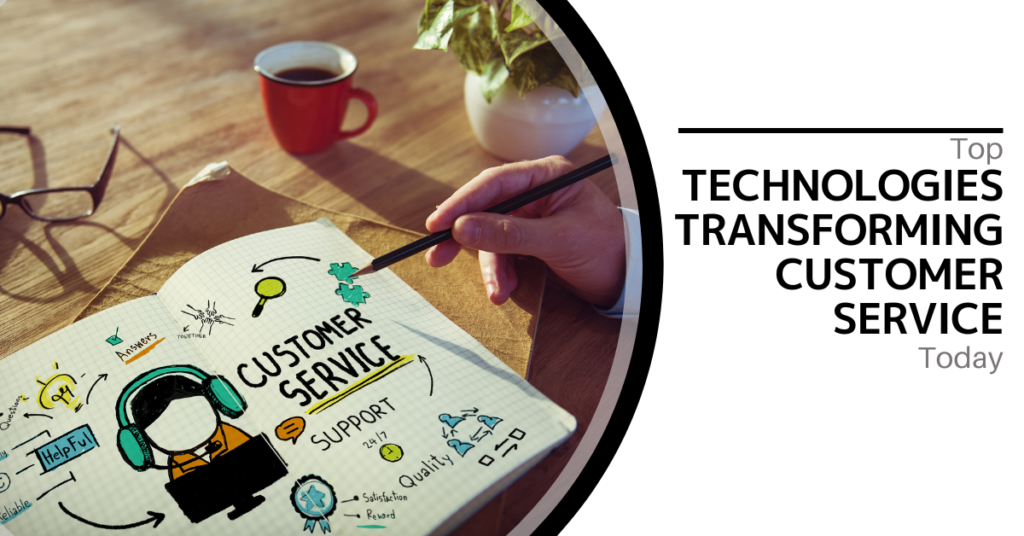|
Getting your Trinity Audio player ready...
|

Excellent customer service forms the foundation of a thriving business. As customer expectations evolve, companies must continuously update their approaches and technology to meet these changing demands.
Studies reveal that 55% of customers prefer self-service options over interacting with representatives, underscoring a shift toward more autonomous service solutions. Technology plays a transformative role in this shift, offering innovative tools that improve both service efficiency and customer satisfaction. So, which technologies can elevate your customer experience? Let’s dive into several current options revolutionizing the industry and helping companies remain competitive.
1. Artificial Intelligence (AI) and Machine Learning
AI and machine learning are at the forefront of enhancing customer service by making interactions smoother and more tailored to individual needs.
- AI-Powered Chatbots: Chatbots driven by AI simulate natural language, making interactions feel intuitive. They’re capable of managing numerous tasks effectively.
- Predictive Analytics: Machine learning predicts customer needs by analyzing data, allowing businesses to address potential issues proactively.
- AI-Enhanced Personalization: Through data analysis, AI can deliver customized recommendations that boost engagement and loyalty.
2. Omnichannel Support
Today’s customers expect seamless assistance across multiple platforms—be it email, social media, phone, or in-person. Omnichannel support offers a cohesive experience across these varied touchpoints.
- Unified Customer Profiles: By consolidating customer interactions, businesses create a complete history that enables personalized service.
- Consistency Across Channels: Omnichannel support offers reliable service, strengthening trust and ensuring customers can switch channels easily without disruption.
- Real-Time Channel Shifting: Advanced systems allow customers to move between channels smoothly, increasing satisfaction and efficiency.
3. Cloud-Based Customer Service Platforms
Cloud-based platforms provide flexibility and scalability unmatched by traditional systems, adapting easily to changing business needs.
- Scalability and Adaptability: Cloud solutions allow businesses to expand or reduce their service capacity, ideal for handling seasonal fluctuations in demand.
- Remote Access and Team Collaboration: Cloud platforms enable teams to work from anywhere, facilitating real-time collaboration and efficient customer support.
- Integration with Other Tools: Cloud-based solutions can integrate with various tools, centralizing data and enabling more streamlined workflows.
4. Self-Service Technologies
Self-service options empower customers to solve issues independently, often leading to higher satisfaction and reduced support team workload.
- Knowledge Bases and FAQs: Comprehensive online resources offer customers quick solutions to common questions, reducing support calls.
- Interactive Voice Response (IVR) Systems: IVR systems help customers navigate queries via phone, often resolving issues without a live agent.
- Customer Portals: These portals allow customers to manage accounts, access resources, and handle many tasks independently, available 24/7.
5. Data Analytics and Customer Insights
Data analytics provides crucial insights into customer behavior, preferences, and needs, allowing for more effective service delivery.
- Customer Sentiment Analysis: This AI-powered analysis interprets feedback from reviews, surveys, and social media, identifying areas for improvement.
- Customer Journey Mapping: Analytics map out the customer journey, spotlighting key touchpoints and potential pain points for a smoother experience.
- Predictive Customer Support: By examining historical data, predictive analytics helps anticipate customer needs, enabling proactive assistance.
6. Robotic Process Automation (RPA)
RPA utilizes software bots to handle repetitive tasks, freeing human agents for more complex interactions.
- Automating Routine Tasks: RPA speeds up processes like data entry and record updates, improving accuracy and response times.
- Enhancing Interactions: RPA equips agents with real-time data, enabling more personalized assistance.
- Quick Response Times: By automating responses, RPA shortens customer wait times, contributing to higher satisfaction.
Let’s Create Your Technology Strategy
Adopting the right technology is vital for enhancing customer service. Our team of consultants can guide you in building a tech roadmap tailored to your business’s goals and budget. Connect with us to start planning your customer service transformation.
Twintel has grown into an expansive, full team of IT services professionals, acting as the outsourced IT department of non-profits, small to mid-size businesses, and enterprise-level corporations in Orange County, across California, and nationally.
Today, it’s the strength and deep expertise of the Twintel team that drives positive outcomes for clients. Each of the support staff, technicians, and engineers works diligently each day to make sure that the companies served have the seamless, secure, and stable IT environments needed to allow them to pursue their organizational objectives.